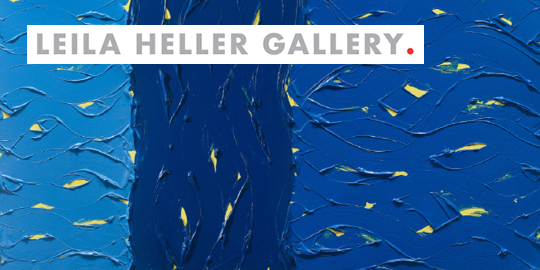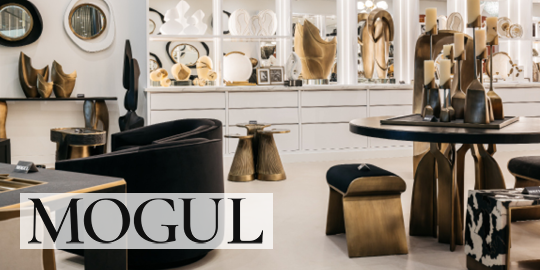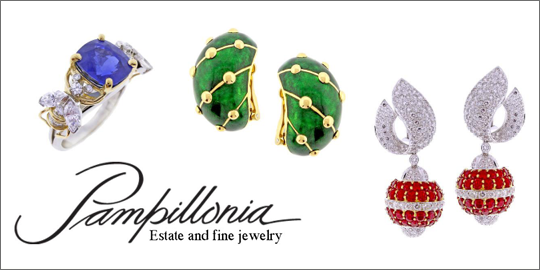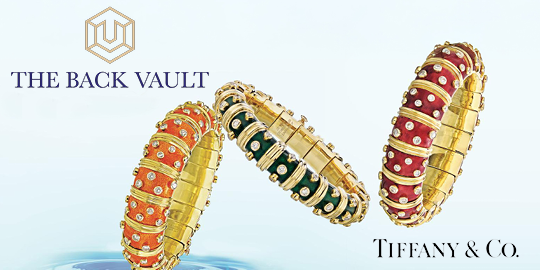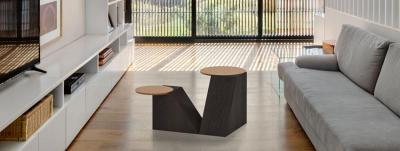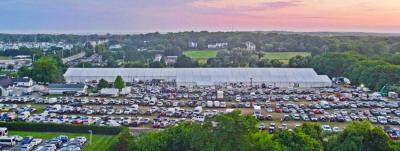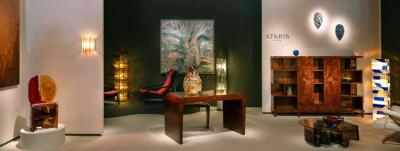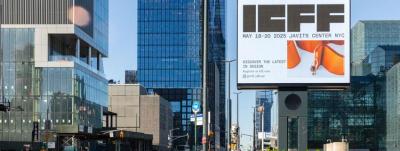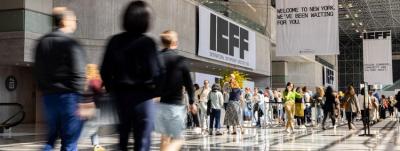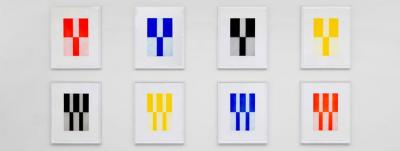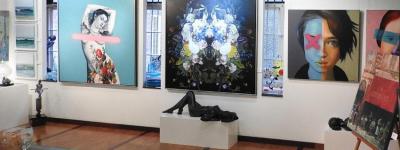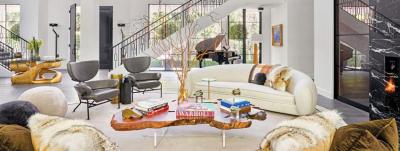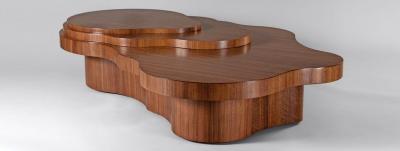Gregory Nangle and Outcast Studios Mix Imaginative Flair with Traditional Craft
Gregory Nangle and
Outcast Studios Mix Imaginative Flair
with Traditional Craft
Photography courtesy Gregory Nangle unless otherwise noted
 | |
Gregory Nangle |
Gregory Nangle describes himself as a multi-disciplinary artist, engineer, fabricator, and designer. But even that impressive list of credentials doesn't do his abilities justice, for in addition to fabricating bronze sculpture, furniture, and custom lighting in glass for artists, home brands, architects, and designers through his business Outcast Studios, he creates his own collectible lines of furniture, mirrors, and lighting.
Nangle began his career as a fine artist, attending Hartford Art School and then later the Pennsylvania Academy of the Fine Arts. “I was creating paintings but increasingly incorporating collage. It dawned on me that I wanted to be making three-dimensional forms, so I just went in that direction,” he says from his home in a fishing village on Deer Isle, Maine, where he lives with his wife, Kelly, who owns and runs The Outcast Gallery in Stonington, housed in a building Nangle designed and built himself. He is also an architect.
Nangle’s first job out of high school was as a house painter. The business owner was an artist, and the pair would paint houses in the morning and attend life drawing classes in the afternoon. “It was a lot of fun, but I realized I needed to grow creatively,” he says. He got a job as a studio assistant for the legendary glass artist Mark Ferguson, a student of Howard Ben Tré and renowned for his innovative cast glass sculptures. Over the next few years, he learned the craft of casting glass. He worked out of the studios at Urban Glass in Brooklyn alongside his peers Jeff Zimmerman and Hank Murta Adams.
 |  | |
| Gregory’s early experiences in the field of design gave him an expert skill set in various techniques working with glass. At left, Gregory at the furnace, blowing glass and right, pouring molten glass into a mold for a cast glass piece. | ||
 |  | |
Left: The Dip Chandelier has tiers of handmade pressed glass disks, with top and bottom tiers dipped into molten metal, leaving a lustrous, mirrored coating (shown here in nickel, also available in copper or 24k gold) along the bottom edges that sparkles and reflects light. Handmade to order and available in custom colors. Right: Solarized Cleaving Ruby Red Ghost Vase. Handblown ruby glass with faded silvering at base. Available in custom colors. Photos by Joe Kramm. | ||
“I feel like I grew up as an artist and as a designer in the American glass community,” Nangle says, speaking about his time at Urban Glass. He loves working with glass, he says, but it was later while attending art school that he began making sculptural furniture, and bronze casting became his passion. He held his first solo show of his sculptural bronze and glass pieces with Wexler Gallery in 1999, and continued to show with Wexler for the next 25 years.
 |
Left: Torsion Console Table, 2021. Cast bronze and crystal, limited edition of 8. Right: Winter Hazel Leaf Bench, cast bronze winter hazel leaves welded into a geometric form. This piece celebrates the mesmerizing effect created when geometry and nature are brought together. Photos by Ken Ek. |
During his time with Wexler Gallery, the artist refined his sensibility for making sculptural furniture. “I started revisiting the work I had made earlier in Hartford, my cast concrete and steel tables, but reinterpreted in bronze and glass,” he explains. Among the projects were his experimental "Wish Machines", which incorporated furniture wood working techniques, such as traditional joinery and hand-finished French polishes.
“It is kind of embarrassing to me now, but I thought they were cool back then,” Nangle says about his experimental furniture, based on aesthetic theories of authors, mystics, and Theosophists. An early sideboard made of wood, with brass frames and sheet glass, had plate glass slides that slid into drawer faces for the display of “blood, hair, or sweat” samples viewable through microscopic viewports illuminated with electric light.
 |  | |
Nangle’s hauntingly beautiful Ghost Mirrors are his most popular design, created with his painterly verre églomisé technique and hand cast bronze details. Each one is a unique work of art. Left: Chemical Landscape Mirror Photo by Joe Kramm. Right: HexagonL Mirror. Photo by Ken Ek. | ||
Nangle's breakthrough into the collectible furniture market came in the 2000s with the Ghost Mirror Series, inspired by literary works by Samuel Beckett and Eugene O’Neill. They were fabricated with églomisé, also called distressed mirror glass, a mirroring technique in which gold or silver leaf is applied by hand to the reverse of glass panes. The method results in foggy, mystical, luxurious surface qualities that are unique to each piece.
”As a sculptor with a strong background in metal and glass, I naturally wanted to show both materials in a new way, working together,” the artist explains. “And as a painter, I also wanted to use my lifelong technical training in oil painting in a new way through the lens of the glass material. I have developed a language of hardware and glass for the mirrors that has evolved over three decades and is totally original to me and my own artistic techniques and process.
 |
A pair of round Ghost Mirrors create an otherworldly ambiance. Photo by Ken Ek. |
Nangle continues to make the Ghost Mirrors, which remain his most popular and successful designs. No two mirrors are the same, he explains. “The patinas used on the brackets and hardware are each unique, and they change with each season and project. While older mirror styles are available for commission, new finishes and unique glass treatments are always at the forefront of the next piece. This assures that each mirror I make is a one-of-a-kind artwork.”
Many artists throughout history have worked with églomisé glass. What is different about Nangle’s mirrors is that they are mounted in handmade cast bronze frames, and the actual glass decoration technique is unique to him. He applies the ombré on the back of the glass in a painterly rather than a patterned effect. His mirrors can often appear to contain surface apparitions.
 |  | |
| Left: Cleaving Chandelier in blackened steel. Hand fabricated in steel and hand finished with a reflective white lacquer interior. Custom finishes and sizes are available. Photo by Joe Kramm. Right: A beautiful one-inch-thick top in hand-cast American Crystal pairs with a cast bronze frame in Outcast Studio's Ash Side Table. Options include custom sizes and configurations, nesting tables and custom patination including high polish and nickel silver cast frame. Photo by Joe Kramm. | ||
Nangle is building a studio and workshop on his property in Maine, where he spends six months of the year living and working. But for the time being, everything is made in a massive multi-story studio in Philadelphia, a historic 1850s foundry that was used to cast the bronze architectural details in the Rodin Museum nearby, and sculptures on display outside of the Philadelphia Museum of Art.
 |  | |
Left: Cleaving Side Tables, 2021. Stainless steel with gunmetal patina. Right: Bronze Ripple Rorschach Chair, 2018. Polished cast bronze. Natural forms are frequent motifs in Nangle’s work, and appear here in the branch-like legs and spiral design on the back and seat, which can be likened to tree rings. Photos by Joe Kramm. | ||
He is always working on a dozen things, he says, and is happiest when he’s busy in the studio. His favorite activity is still making furniture in bronze. “I have been working in bronze and running my foundry for 30 years now. I am addicted to it,” Nangle says, laughing. He built his first foundry to make sculpture and furniture in the Green Point section of Brooklyn in the 1990s, then a tough neighborhood. “It was a place people came to torch cars, do burnouts, and party, so I figured the residents weren’t going to complain if there was more smoke and fire.”
Nangle has shown his work internationally at galleries and in design fairs such as Collective Design, Salon Art + Design, Design Miami, and Sofa. From 2017 to 2022, the prestigious Los Angeles gallery Blackman Cruz sold his designs, and in early 2025, he began working exclusively with gallerist and interior designer Jeff Lincoln’s Art + Design gallery in Southampton, New York. Lincoln is a big fan of Nangle, having purchased many of his pieces for design projects.
 |  | |
A pair of Lowback Leaf Chairs with upholstered bolster cushion backs. Shaped seat in hand cast bronze winter hazel leaves, frame in cast bronze with naturalistic Batutto effect gives the appearance of carved wood. Shown with Voutsa fabric upholstery, available in custom fabric of your choice. Photos by Ken Ek. | ||
“There is something special and unique about Nangle,” Lincoln says. “There are other designers who can make things that resemble what he does, but nobody I know of can replicate his designs — it is the quality of his craftsmanship and skill level that sets him apart, combined with an innate artistry. Take his Ghost Mirrors — I've never seen anything like them in my career. He is operating on his own creative and imaginative level.”
Lincoln says Nangle is attempting more of “an art approach” to design projects. “He is often bending traditional craft and art techniques, even new technology to his will to create exciting forms,” Lincoln says that his prices range from around $5,000–$15,000, which he regards as another good aspect to the work. “It is affordable and approachable for all audiences.”
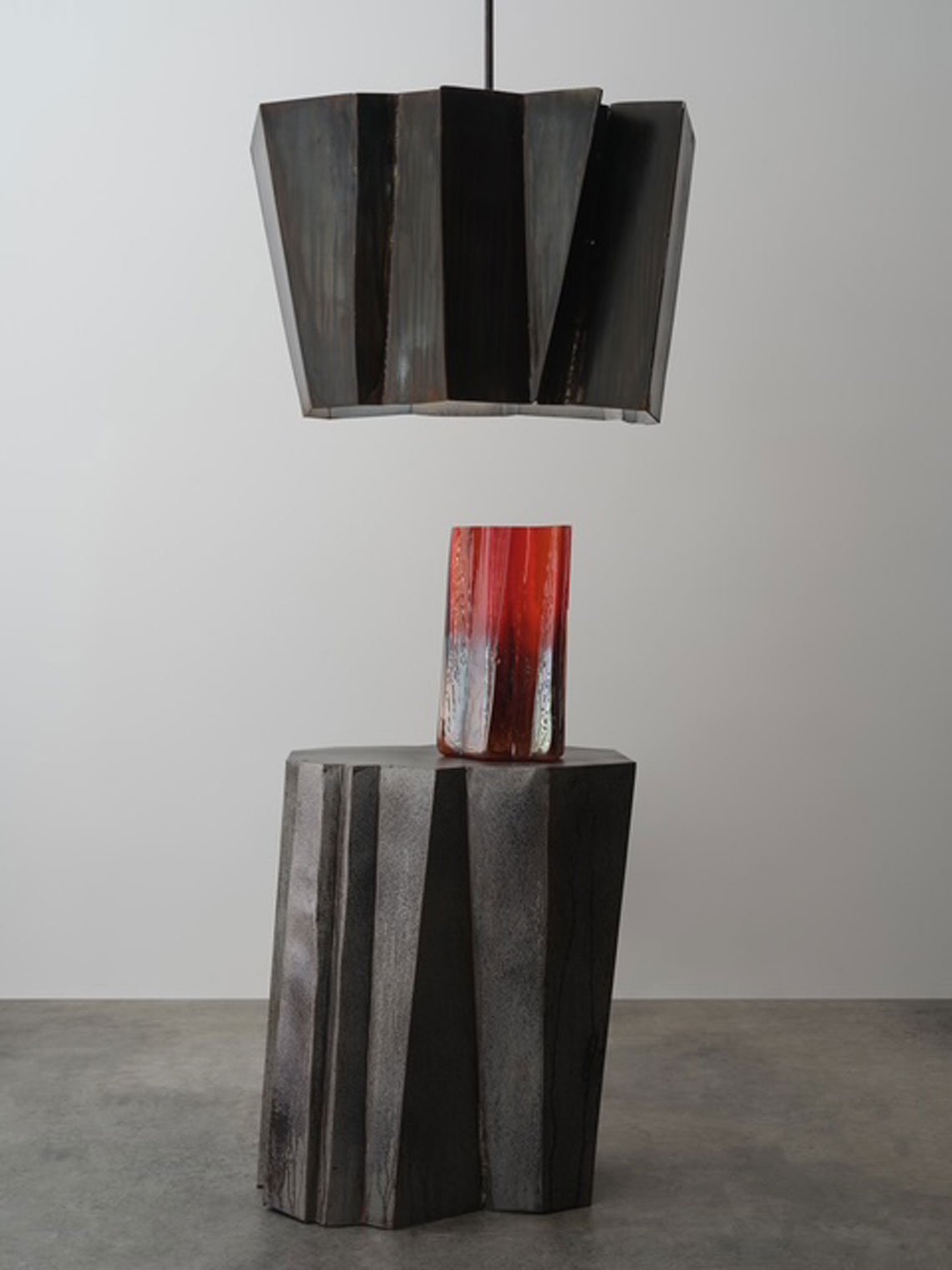 |  | |
Left: Cleaving Series Ruby Red Vase with Cleaving Pendant Light and Cleaving Side Table. Right: A moody gallery vignette with a Dip Chandelier, Chemical Landscape Ghost Mirror and Cleaving Side Table. Photos by Joe Kramm. | ||
Nangle is in the process of making a custom bronze ‘leaf’ bench in a new pattern at the Philadelphia foundry. It is slated for Lincoln’s Art + Design gallery in Southampton, New York, joining other works on display: several new “Disappear” ghost mirrors, a Cleaving Series Solarized Steel Side Table, and a Cleaving Series Ruby Red Vase. The Cleaving Series is the outcome of Nangle's fascination for and study of geology and Planetary Accretion, he says.
The new bronze leaf bench is typical of Nangle’s process of making furniture — insanely complicated in conception and enormously difficult and labor-intensive to execute. The piece is made of many units of cast bronze ginkgo leaves that have been welded together in patterns to create surfaces that are combined to create a finished structure. “The final design is fungible,” Lincoln says, “as the pieces can be combined for a credenza, side tables, or even a coffee table.”
 |
The Stellated Spherical Spring Table with patinated bronze winter hazel leaves has a base constructed of three interlocking tetrahedrons with a round glass top. The contrast between the natural leaf forms and the geometric shape is striking — appearing to float and casting a carpet of fallen-leaf shadows. The piece can be made to order with ginkgo leaves as well as various custom finishes. Photo by Ken Ek. |
Nangle has also created a Spherical Spring Coffee Table made of thousands of intricately detailed cast bronze winter hazel leaves welded together. “I have been working with leaves as decorative elements for 15 years and have made many different pieces,” he says. “I begin by transforming natural forms into flat semi-geometric shapes like spherical polyhedra, and then I assemble them by hand into pleasing patterns.”
Nangle continues to design, make, and assemble all of his work. “I focus on the materials, studio practice, and having a direct hand in the creation of everything I do,” he says, which makes him somewhat of an anachronism in today's world, where designers often contract out the making process. “The last thing Wendell Castle said to me before he died was ‘just keep doing what you are doing because what you are doing is great’. I think of those words every day. It keeps me sharp.”
 |


